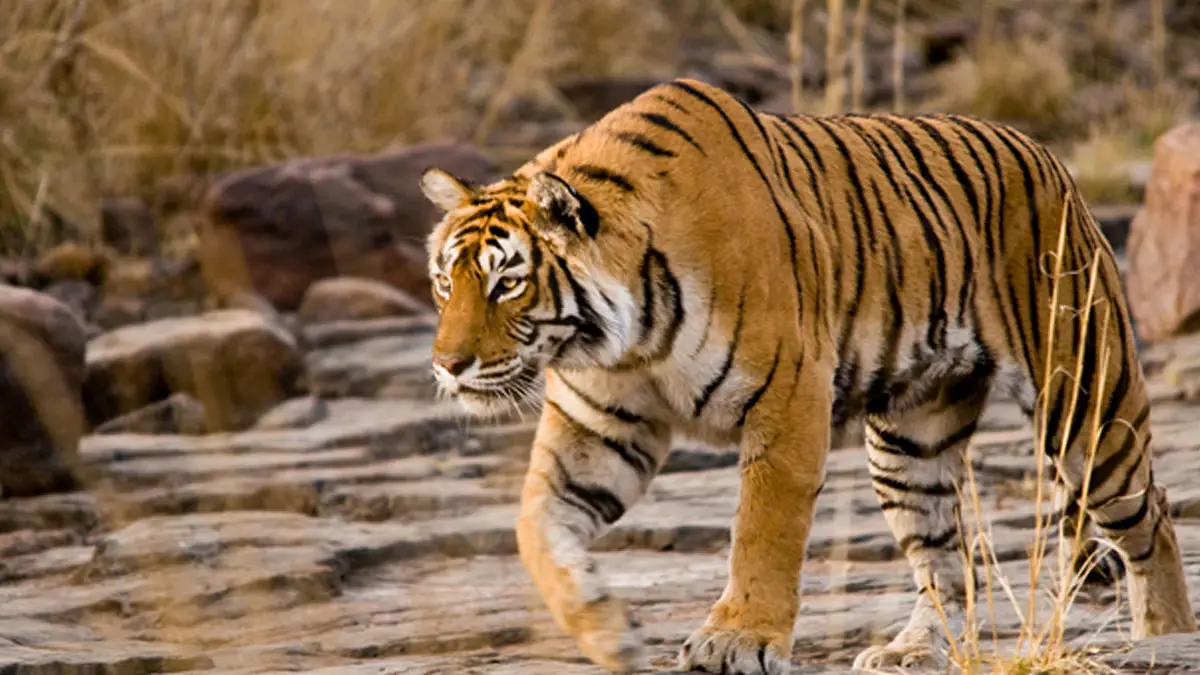Published by Oyepedia Travel LLP

There is an unmatched thrill in walking through the jungle, eagerly searching for a tiger, knowing that the majestic predator could already be observing you. As Ashlan Gorse Cousteau once said, “There is nothing like the thrill of walking through the jungle looking for a tiger and knowing they could be watching you already.” While luck plays a role in tiger sightings, having in-depth jungle knowledge and up-to-date information about tiger safaris in India is crucial to making the experience successful.
Understanding the Jungle Before Entering a Tiger Safari
Before venturing into a national park or tiger reserve, it is essential to be well-rested. Your senses need to be alert to fully absorb the experience. The air will be filled with the sweet scent of flora, and the birds’ melodious songs will lull you into a state of relaxation, washing away the stresses of daily life. Even though animals and birds may not speak the same language, they communicate effectively within the ecosystem. For instance, a langur’s alarm call can warn a herd of Chital, and the racket-tailed drongo alerts nearby animals to potential threats. Recognizing these sounds is a vital aspect of jungle knowledge that can be invaluable when on a tiger safari.
Becoming a Keen Observer in the Jungle
The more you observe the jungle, the more you learn. However, to truly understand its intricacies, you must enter with humility. The jungle is a living, breathing entity, with each sound having a purpose. As you embark on more tiger safaris, you’ll start to recognize alarm calls from animals like Chital, langurs, and various birds. It’s not just about identifying the sound, but also understanding the meaning behind it. Some animals, like Chital, may issue a series of calls, while others, like Sambar or barking deer, have distinct and more intense alarm calls.
Locating Tigers and Other Species Through Sound

In the jungle, sounds such as the snapping of a twig, a low growl, or a bird’s warning call can be crucial indicators. Recognizing the direction and distance of these sounds can help pinpoint the location of an animal, including tigers. Jungle guides, who are in tune with the environment, have a heightened sensitivity to these sounds and signs, which allows them to track animals effectively. A good guide, often someone born and raised near national parks, will have the intuition and experience needed to understand the subtle signs in the jungle.
Decoding the Significance of Tracks and Pugmarks
Signs like pugmarks (animal footprints) are essential in tracking wildlife. Skilled guides can discern if the mark belongs to a male or female tiger, and even estimate the age of the print. By observing the surrounding environment—like the direction of the wind, time of day, and any disturbance from insects—guides can deduce when the track was made. The wear and tear on the pugmarks also reveal the health of the animal, such as if it is injured or in good condition. Recognizing these small details requires focused observation and extensive jungle experience.
The Art of Spotting Tigers and Other Hidden Wildlife
While on safari, the key to spotting a tiger lies in observing even the faintest movements within the vast wilderness. Tigers, with their camouflaged coats, often blend into their surroundings, making it difficult to spot them. A trained eye will catch subtle movements that others might miss. The thrill of spotting a tiger before your guide is unmatched, and it’s an experience that safari-goers will cherish and recount for years.
The Role of a Good Guide in Tiger Safaris

A knowledgeable guide is essential for a successful tiger safari. The best guides are not just well-versed in the technical aspects of tracking animals, but they also have a deep understanding of the jungle’s rhythms and communication systems. To maximize the safari experience, it’s important to stay focused, minimize distractions, and listen closely to your guide’s instructions and the sounds of the jungle. This will help ensure that you gain the most from your time in India’s tiger reserves.
Learning from Tigers and Wildlife
A tiger safari is as much about learning as it is about adventure. Each safari provides new insights into the behavior of tigers and the ecosystem they inhabit. By aligning yourself with experienced companies and guides, like Oyepedia Travel LLP, you’ll be immersed in a journey that blends wildlife conservation with tourism, giving you a deeper appreciation for India’s incredible biodiversity. These experiences not only enrich your understanding of the natural world but also contribute to the conservation efforts aimed at preserving tigers and other endangered species in India’s jungles.
Embark on your next tiger safari with Oyepedia Travel LLP and discover the thrilling world of the tiger like never before. Our expert guides ensure that your safari is not just a sighting but a profound learning experience.

